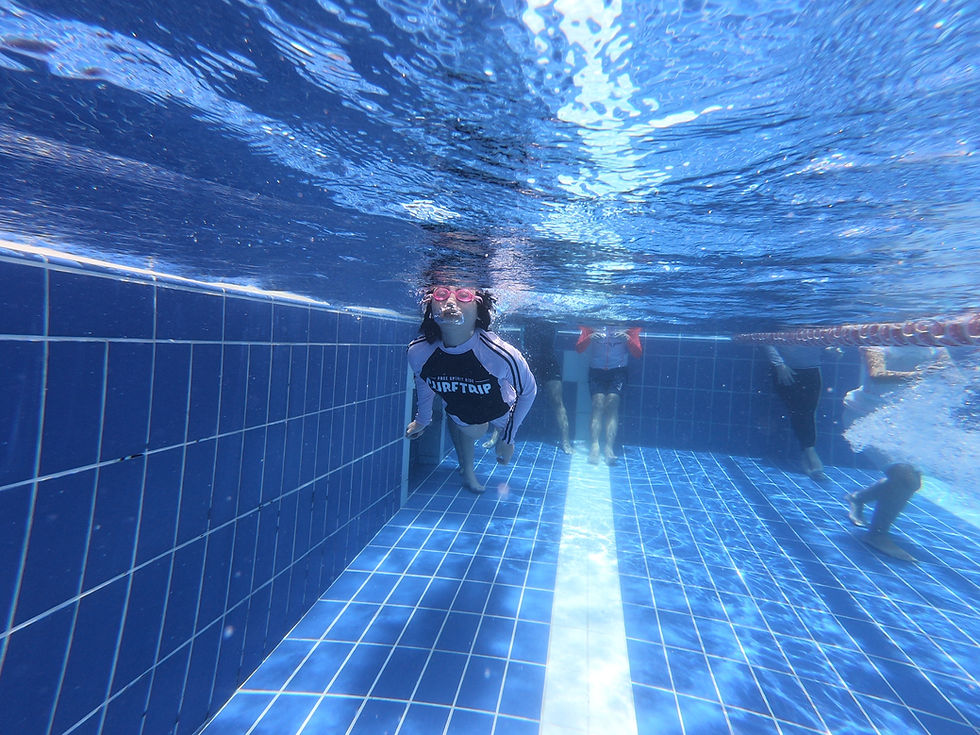Swimming vs. Running: Which is Better for Fitness?
- SG Sink Or Swim

- Jun 24
- 3 min read

When it comes to getting in shape and staying healthy, two of the most popular cardio workouts are swimming and running. Both offer substantial health benefits, but they differ significantly in their impact on the body, muscle engagement, accessibility, and long-term sustainability.
So, which is better for fitness — swimming or running? The answer depends on your goals, body type, health conditions, and personal preferences. Let’s break down the pros and cons of each to help you decide which one suits your lifestyle and fitness objectives.
🏊♂️ Swimming: A Total-Body, Low-Impact Workout
✅ Pros of Swimming
1. Low-Impact on JointsWater supports up to 90% of your body weight, making swimming ideal for those with joint pain, arthritis, or recovering from injury.
2. Full-Body EngagementSwimming works nearly every major muscle group — legs, arms, back, and core — while simultaneously improving flexibility and endurance.
3. Builds Cardiovascular and Muscular EnduranceBecause it involves continuous movement and resistance, swimming improves heart health and tones muscles without the wear and tear.
4. Burns Calories EfficientlyA vigorous swim can burn 400–700 calories per hour, depending on your intensity and stroke choice.
5. Mental Health BoostThe rhythm of swimming and being in water can help reduce stress and improve mental clarity.
❌ Cons of Swimming
Requires access to a pool or safe open water
Technique-heavy — beginners may struggle at first
Not weight-bearing, so it may not aid in bone density improvement as much as running
🏃♂️ Running: A Convenient, Weight-Bearing Cardio Workout
✅ Pros of Running
1. Highly AccessibleYou can run almost anywhere — outdoors, on a treadmill, or even in place. No gym or pool required.
2. Excellent for Cardiovascular FitnessRunning improves heart and lung capacity, reduces blood pressure, and can help manage cholesterol.
3. Great for Weight LossRunning burns approximately 600–1000 calories per hour, depending on intensity, speed, and weight.
4. Strengthens BonesRunning is a weight-bearing exercise, which stimulates bone growth and helps prevent osteoporosis.
5. Time-EfficientShort, high-intensity runs (like sprints or intervals) provide effective results in less time.
❌ Cons of Running
High-impact — can stress joints, particularly knees and ankles
Higher injury risk (shin splints, runner’s knee, stress fractures)
Doesn’t work the upper body as much
Weather-dependent (if you prefer running outdoors)
🧠 Swimming vs. Running: Which Is Better for Your Fitness Goals?
Goal | Best Option |
Low-impact cardio | Swimming |
Weight loss | Both (slight edge: running) |
Full-body toning | Swimming |
Bone strengthening | Running |
Convenience & accessibility | Running |
Injury recovery/cross-training | Swimming |
Stress relief | Both (edge: swimming) |
Beginner-friendliness | Running (easier to start) |
🤔 What About Doing Both?
You don’t have to choose just one. In fact, combining swimming and running can give you the best of both worlds:
Alternate swim and run days to reduce injury risk
Use swimming as recovery or active rest after hard runs
Cross-train for triathlons or endurance events
Mix in variety to keep workouts mentally stimulating
🏁 Final Verdict
There’s no one-size-fits-all answer. Swimming is better for those looking for a joint-friendly, full-body, low-impact workout. Running is ideal for those focused on weight-bearing, accessible cardio and building lower-body strength.
Ultimately, the best workout is the one you enjoy and can stick to consistently. Whether you're gliding through laps or pounding the pavement, both can help you become stronger, leaner, and healthier.





Comments